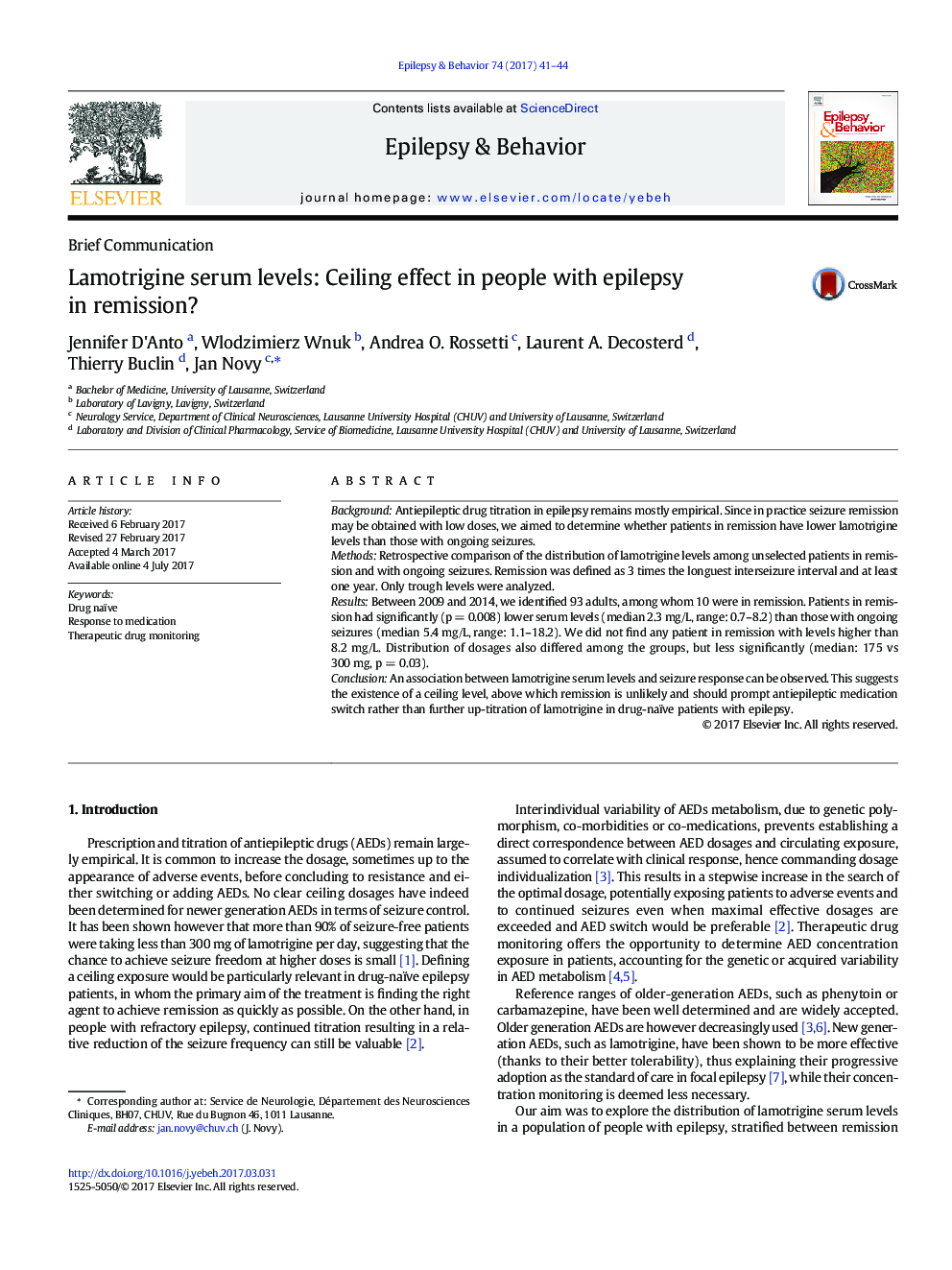| Article ID | Journal | Published Year | Pages | File Type |
|---|---|---|---|---|
| 5628226 | Epilepsy & Behavior | 2017 | 4 Pages |
â¢People with epilepsy in remission have significantly lower lamotrigine serum level.â¢There is an effect of ceiling for lamotrigine level associated with remission.â¢These findings suggest an association between serum level and clinical response.â¢Assessing serum levels when titrating lamotrigine could be useful.
BackgroundAntiepileptic drug titration in epilepsy remains mostly empirical. Since in practice seizure remission may be obtained with low doses, we aimed to determine whether patients in remission have lower lamotrigine levels than those with ongoing seizures.MethodsRetrospective comparison of the distribution of lamotrigine levels among unselected patients in remission and with ongoing seizures. Remission was defined as 3 times the longuest interseizure interval and at least one year. Only trough levels were analyzed.ResultsBetween 2009 and 2014, we identified 93 adults, among whom 10 were in remission. Patients in remission had significantly (p = 0.008) lower serum levels (median 2.3 mg/L, range: 0.7-8.2) than those with ongoing seizures (median 5.4 mg/L, range: 1.1-18.2). We did not find any patient in remission with levels higher than 8.2 mg/L. Distribution of dosages also differed among the groups, but less significantly (median: 175 vs 300 mg, p = 0.03).ConclusionAn association between lamotrigine serum levels and seizure response can be observed. This suggests the existence of a ceiling level, above which remission is unlikely and should prompt antiepileptic medication switch rather than further up-titration of lamotrigine in drug-naïve patients with epilepsy.
